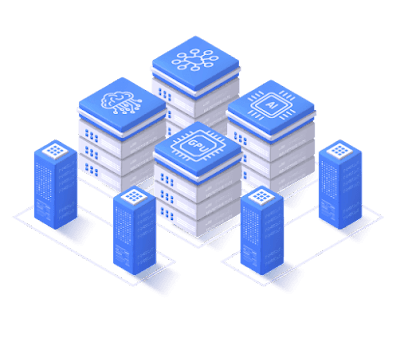New Generation AI (Artificial Intelligence)
Deep Learning:
Deep learning is a subfield of machine learning that uses neural networks with
many layers to learn and make predictions. Deep learning has enabled AI systems
to achieve unprecedented levels of accuracy in tasks such as image and speech
recognition, natural language processing, and game playing.
Reinforcement Learning: Reinforcement learning is a type of machine learning that involves an agent learning to interact with an environment to maximize a reward. Reinforcement learning has been used to create AI systems that can play complex games like chess and Go, and even control robots and drones.
Generative Models: Generative models are AI systems that can generate new data that is similar to a given dataset. This has applications in areas such as image and video synthesis, natural language generation, and even drug discovery.
Autonomous Learning: Autonomous learning is a type of machine learning where an AI system can learn from its environment without human supervision. This has the potential to create AI systems that can adapt to new situations and learn from their mistakes.
Explainable AI: Explainable AI is a type of AI system that is designed to be transparent and explainable. This is important because it allows humans to understand how the AI system is making decisions, which is crucial for building trust in AI.
The Usage of Artificial Intelligence in
the Present-Day World.
The new generation of AI is being applied in a wide range of industries, including healthcare, finance, transportation, and manufacturing. Some examples of how AI is being applied in different fields:
Healthcare: AI is being used to improve healthcare outcomes by analyzing medical data and assisting doctors in making diagnoses and treatment decisions. AI-powered devices such as wearables can also monitor patient health in real-time and alert healthcare providers to any concerns.
Education: AI is being used to personalize learning and provide students with feedback on their performance. AI-powered educational platforms can also help teachers to identify areas where students are struggling and provide additional support.
Finance: AI is being used in finance to analyze market data and make investment decisions. AI-powered chatbots can also provide customer service and answer questions about financial products.
Manufacturing: AI is being used to optimize manufacturing processes, improve product quality, and reduce downtime. AI-powered predictive maintenance can also help to identify potential issues before they cause equipment failure.
Transportation: AI is being used to improve transportation safety and efficiency. For example, autonomous vehicles can reduce accidents caused by human error and improve traffic flow.
Retail: AI is being used to personalize product recommendations and improve customer experiences. AI-powered chatbots can also provide customer service and answer questions about products.
Agriculture: AI is being used in agriculture to optimize crop yields and reduce waste. AI-powered drones can also be used to monitor crops and identify areas that require attention.
Energy: AI is being used in the energy sector to optimize energy consumption and reduce waste. AI-powered sensors can also be used to monitor equipment performance and identify potential issues.
The limitations of Artificial Intelligence
(AI)
Despite the many benefits and potential applications of Artificial Intelligence (AI), there are also several limitations and challenges associated with this technology.
Some of the main
limitations of AI:
Lack of creativity: While AI can be highly effective at performing specific tasks, it lacks the creativity and intuition of human beings. AI systems are typically designed to perform a narrow range of tasks and cannot think outside the box or come up with novel solutions to problems.
Data bias: AI systems rely on data to learn and make decisions, and if the data is biased, the resulting AI system will be biased as well. This can lead to discriminatory or unfair decisions, particularly in areas such as hiring, lending, and criminal justice.
High cost: Developing and deploying AI systems can be expensive, requiring specialized hardware, software, and highly skilled professionals. This can make it difficult for smaller organizations or developing countries to take advantage of AI technology.
Limited application: While AI has many potential applications, there are still many tasks and situations where AI is not yet effective. For example, AI struggles with tasks that require common sense reasoning, creativity, or emotional intelligence.
Security concerns: As AI systems become more integrated into our lives, there are concerns about the security and privacy risks associated with these systems. AI-powered devices and systems can be vulnerable to hacking and cyber-attacks, potentially leading to serious consequences.
To sum up, the new generation of AI is a game-changer that has the potential to transform many aspects of our lives. However, it is important that we address the ethical and societal concerns associated with AI and ensure that AI is developed and deployed in a responsible and ethical manner.




Comments
Post a Comment